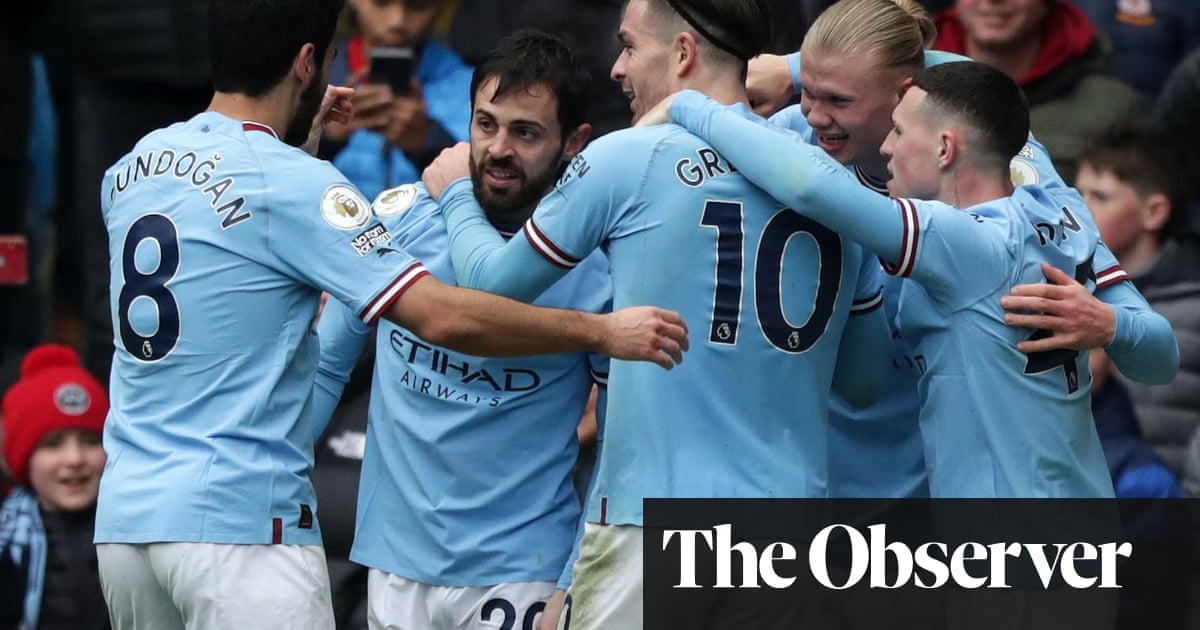
There was Josh McEachran and Ola Aina. There was Dominic Solanke and Gaël Kakuta. There was the season under Maurizio Sarri when he did not give a single debut to an academy player. There was the Chelsea manager who argued in a presentation to the technical director, Michael Emenalo, that the club should scrap or scale down its academy as it was costing too much and producing no tangible benefit to the first team.
For all of them, and all of this, Chelsea’s third goal against Juventus on Tuesday night was an ornate kind of closure: Reece James peeling away towards the back post with his customary menace, Ruben Loftus-Cheek twisting and shuffling in the area, Callum Hudson-Odoi applying the finish. A goal made in Chelsea, conceived at Cobham: perhaps the fullest vindication to date of Roman Abramovich’s frequently ridiculed, frequently wasteful vision of a Chelsea first team brimming with academy talent.
Besides James, Hudson-Odoi and Loftus-Cheek, Trevoh Chalobah got the first goal, prolonging his spectacular start to the season. Mason Mount and Andreas Christensen gamely warmed the bench. Even if you disregard Romelu Lukaku, who joined Chelsea at 18 before rejoining this summer, Chelsea youth-team products have played 27% of the minutes and scored almost a third of the goals.
Nor is this a phenomenon confined to Chelsea. Scan this weekend’s list of Premier League fixtures and all but one conceivably features a Chelsea academy alumnus: Eddie Nketiah at Arsenal, Tino Livramento and Armando Broja at Southampton, Billy Gilmour at Norwich, Marc Guéhi and Conor Gallagher at Crystal Palace, Bertrand Traoré at Aston Villa, Tariq Lamptey at Brighton, Nathan Aké at Manchester City and Declan Rice at West Ham, Ryan Bertrand at Leicester, Jack Cork and Jóhann Berg Gudmundsson at Burnley plus Lewis Bate at Leeds.
Chelsea have not just been building a team, they’ve been building everyone else’s. They do not just lead the Premier League: they’re colonising it, turning it a pale-blue shade of Cobham.
So what happened? Is this simply an unnaturally gifted generation of Chelsea youngsters with a unique capacity to bridge the gulf from academy football to the elite? Or have they finally been given a little help? “We saw very quickly in training that we have some very good kids here,” the manager, Thomas Tuchel, said this week. “What makes me happiest is how much they care about the shirt and the club, and how much they want to make it here.”
And while Tuchel gets a good deal of the credit for being prepared to throw in relatively inexperienced talent such as Chalobah and James, in many ways the groundwork was in place years before he arrived, and not without a few mis-steps along the way. For years Chelsea’s approach to the academy was akin to that of the London property speculator with a vast portfolio of luxury flats he has no intention of ever living in. With their wealth and facilities, Chelsea could sweep up the best young players in Europe, give them a decent wage and watch them accrue value without going anywhere near the first team.
Publicly, of course, the focus was still on developing players for Chelsea’s own use. And naturally, the managers would all say the right things. Antonio Conte was quick to hype up the likes of Aina and Nathaniel Chalobah when he first joined the club in 2016 and then essentially won the league with 13 players. When the economics of football made it so profitable to farm players out on loan and then sell them on, and with an owner who never hesitated to open the trap door when results took a turn, what was the point in doing anything else?
Perhaps the biggest turning point came when Frank Lampard arrived in 2019 with Chelsea temporarily labouring under a transfer ban. Lampard’s predecessor Sarri had barely bothered to conceal his lack of interest in the academy, failing to attend a single training session or under-23 game in his time in charge. Lampard, on the other hand, gave eight academy debuts in his first season, a club record in the Premier League era. Mount, Fikayo Tomori and Tammy Abraham were among those moved to the front of the queue: playing and occasionally erring but most importantly learning in the hot glare of the biggest games.
In a way Lampard’s managerial reputation has been the collateral damage of Tuchel’s stunning success. And ultimately Abramovich’s itchy trigger finger would see to him, too. But where would the likes of Mount and James have been now without those crucial 18 months of development? That, as much as anything he achieved on the pitch, should be Lampard’s legacy as Chelsea manager.
Naturally the academy continues to be a pleasant money-spinner. The departures of Abraham, Tomori, Guéhi and others generated more than £90m in the summer. Another 22 players were shipped out on loan, many of them still trapped on the carousel. If Matt Miazga, Dujon Sterling or Ethan Ampadu are ever to achieve anything in the game, it will almost certainly not be at Chelsea. Tomori has discovered a new lease of life under Stefano Pioli at Milan. Abraham has benefited from the personal tutelage of José Mourinho at Roma.
But importantly the path to the first team is now also there: beaten, blazed and illuminated. The next talented teenager coming through the Chelsea ranks – say, Jude Soonsup-Bell or Harvey Vale – no longer resigns himself to a treadmill of meaningless pre-season friendlies and loans to Vitesse and Huddersfield. Knuckle down, show your worth and you too could be posing with the Champions League trophy in a sea of ticker tape and sweat.
In a sense this is a model that Tuchel himself knows instinctively, having begun his career as a youth coach at Stuttgart under Ralf Rangnick, whose new team he faces on Sunday. Tuchel knows that the very best modern sides have always combined the local with the global: a homegrown core studded with a few superstar signings. He knows that his faith in youth will extend only as far as results and Abramovich’s patience allow. But for now, at least, the two halves of the Chelsea project feel perfectly, cosmically in alignment.












